Category: Built Environment
Our top blog posts of 2021

In 2021, the covid-19 pandemic continued to influence our desire to improve the safety and efficiency of our indoor spaces and we saw an increased public and private investment in energy-efficient technology, manufacturing, and policy. SEEA welcomed a new president, and we expanded and deepened our commitment to equity within our industry. In this notable year, these are the blog posts that you read, shared, and liked the most.
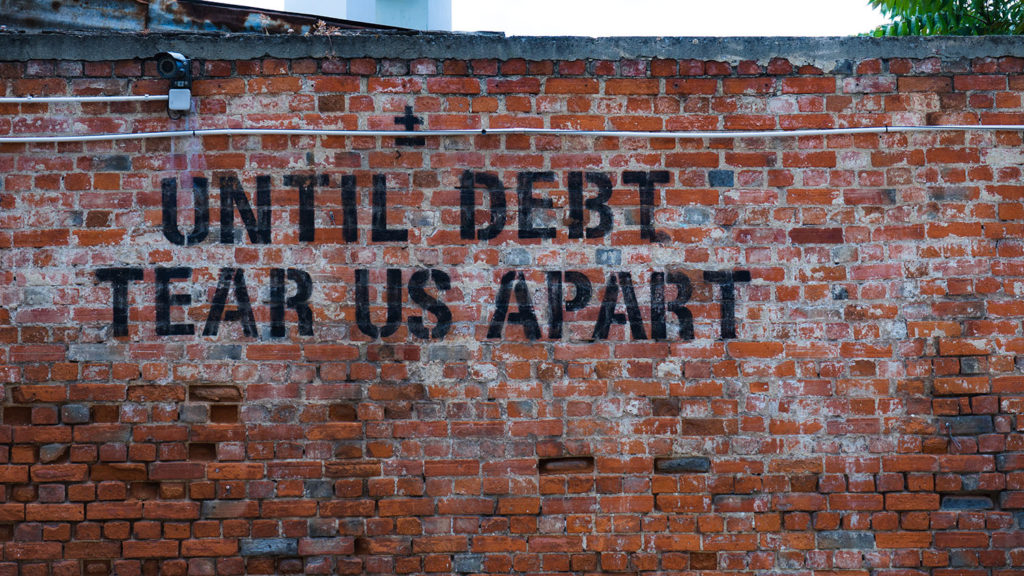
1. What is energy security versus energy burden?
Originally published March 15, 2021
Last month, SEEA released our report, Energy Insecurity Fundamentals for the South. We believe using common metrics is essential to creating robust and prescriptive policies that address the multiple dimensions of energy insecurity. […]

2. Going beyond recovery with the American Jobs Plan
Originally published April 22, 2021
For patients recovering from a major illness or trauma, doctors stress the importance of improving social wellness as a part of recovery. They prescribe getting back on your feet as the first step, but note that staying healthy requires a long-term investment in one’s physical, mental, and social health. […]

3. Energy efficiency for all – the opportunity ahead
Originally published May 6, 2021
While I officially started working at SEEA on April 26, I have had the pleasure of working with SEEA staff and board members for more than ten years. The team’s dedication to realizing a more energy efficient Southeast that benefits all people has long inspired my curiosity […]

4. How American Efficient is realizing a more diverse energy industry
Originally published November 10, 2021
The American Efficient DEI Action Team
Over the last year, a team at American Efficient developed a Diversity, Equity, and Inclusion (DEI) action plan to put some of our company’s values into practice. As a group of mostly white people in a mostly white company—and industry—we regard this as a privilege, in all senses of the word. […]

4. The Infrastructure Investment and Jobs Act will transform the Southeast
Originally published November 12, 2021
On Friday, November 5, the U.S. House of Representatives passed the Infrastructure Investment and Jobs Act. The bill passed the Senate in a bipartisan vote in August and President Biden is expected to sign the bill on Monday, November 15. The $1.2 trillion package is a historic investment in infrastructure that advances energy efficiency, resiliency, and electric transportation. Combined with the President’s Build Back Framework, it will average 1.5 million additional jobs every year for the next 10 years. […]
How heat islands worsen energy inefficiency and inequality in our cities
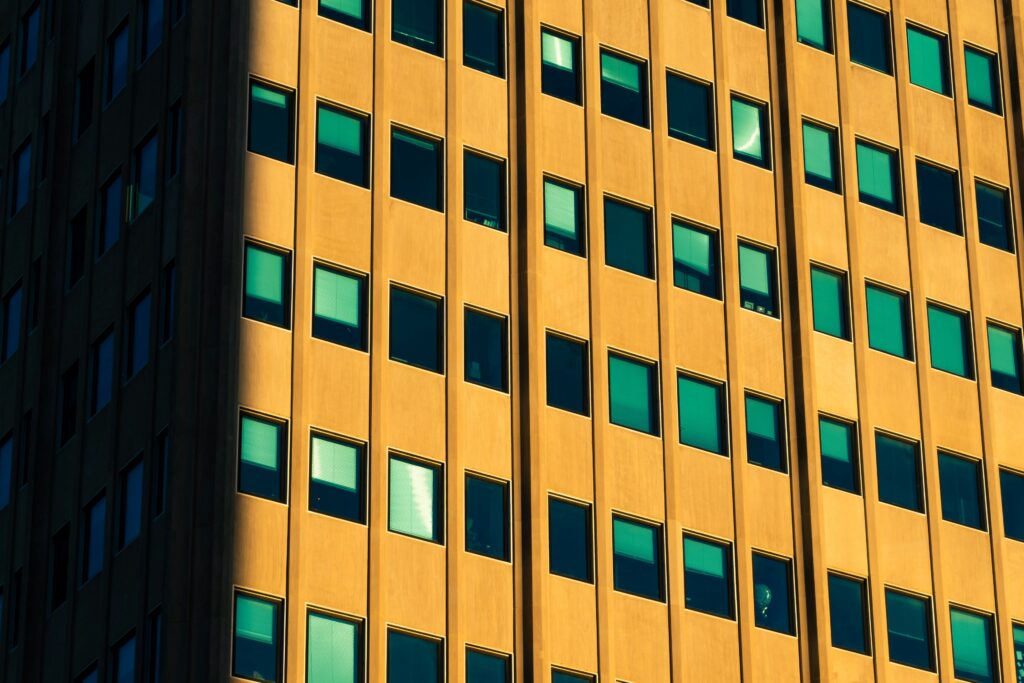
Just after 6 p.m. on Saturday evening in August, policy manager, Claudette Ayanaba and I met at the Outdoor Activity Center in southwest Atlanta to volunteer with the Atlanta Heat Watch Campaign, led by Spelman College professors, Dr. Guanyu Huang and Dr. Na’Taki Osborne Jelks. The campaign uses volunteers to measure temperatures in various neighborhoods at different intervals and aims “to document how heat risk aligns with other important dimensions of population vulnerability to climate change, including race and ethnicity, income, access to air conditioning in the home, population comorbidities for heat illness, and public investment to-date in climate adaptation.”
Dr. Huang handed us a sensor made of white PVC pipe used to measure heat. He then pulled out his phone and texted me a link to the map of our route, which looked like a large puzzle piece outlining Midtown Atlanta. Volunteers measure temperatures along three routes: one south of downtown, one around Emory and Decatur, and the one we were assigned to, through Midtown and Inman Park. The intent was to evaluate how heat might differ in neighborhoods with different characteristics.
Claudette agreed to drive, and I called out the turns. We got in the car, and she set the GPS for Daddy D’z BBQ, our starting point just east of Downtown. As we started our route around 7 p.m., I noticed some nearby restaurant diners looking at the nearly two-foot-long arm of the heat sensor clipped to the window and sticking out over the car roof, likely questioning what we were doing.
It was a good question. Weeks before, Claudette and I both received emails inviting us to volunteer for the campaign. A few years ago, I might have skipped over this email, but recently SEEA has been researching and evaluating the influences on the access and affordability of energy, or energy insecurity. In 2020, we worked with the Texas Energy Poverty Research Institute (TEPRI) to create a StoryMap that illustrates the long-term and compounding energy impacts of discriminatory policy and racism on communities of color. The research draws a through line between historic racist housing policy and the high amount of inefficient housing in low-income communities today.
A family living in an inefficient home is hit with a double whammy if they live in a heat island, making it significantly more difficult and more expensive to cool their home in the summer. A heat island is an urban area that experiences higher temperatures than surrounding areas. Higher concentrations of emissions from traffic corridors, closely situated buildings, and a lack of green infrastructure can all contribute to a local 1 – 7 degree temperature increase. Heat islands can occur under various conditions, in small or large cities, in the suburbs, in different climates and seasons, and during the day or the night. However, for people in low-income communities, heat islands are an additional barrier to maintaining healthy and comfortable homes. Heat related deaths are the number one weather related cause of death, and low-income communities and communities of color experience it at much higher rates than affluent, predominantly white neighborhoods. Low owner-occupancy rates in historically segregated communities also means that residents typically have less control and fewer resources to improve the efficiency of their homes. In response to these realizations, Miami Dade County in Florida just appointed its first Chief Heat Officer to develop solutions for residents in anticipation of mounting negative impacts of rising heat on residents and other communities are expected to follow suit.
Energy efficiency is a powerful tool for mitigating the heat island effect and increasing temperatures due to climate change. Weatherization improvements like better insulation, sealing gaps in your attic or crawlspace, and advanced building technologies like smart thermostats and heat pump water heaters can lower energy bills and reduce the risk of heat-related illness in homes. An energy-efficient home holds its temperature more evenly and requires less energy and less money to heat or cool. Many electric utilities in the Southeast offer energy efficiency programs that connect customers with services, products, and rebates to improve energy efficiency. However there continue to be gaps in residents’ ability to access these resources. For two years, SEEA has been working with partners including the City of Atlanta and Georgia Power to identify energy efficiency solutions for homeowners, landlords, and renters in the six most energy-burdened ZIP codes in Atlanta. We’re learning about the specific challenges and needs faced in each area and designing solutions that provide residents more access to energy efficiency resources that could significantly improve their lives.
It was our understanding of all the compounding energy challenges facing Atlanta residents that led us to spend a couple hours on a Saturday evening driving around the city volunteering with the Atlanta Heat Watch Campaign. In that time, we noticed that most of our route was through tree-lined, more affluent neighborhoods. The streets included on our route were far greener than the roads we had travelled to Outdoor Activity Center, and in a few months we will learn about what impact that had on the temperature in each of those neighborhoods. While we did not gather any information on what people were experiencing inside their homes that evening, my experience tells me they likely used less energy than similarly sized homes in neighborhoods with fewer trees and green space. We look forward to learning more about the story the data tells and will provide updates to this blog post.
Additional Resources:
- Climate change is making the whole city hotter—but rising temps may put some Atlantans in more danger than others, Atlanta Magazine
- ‘Hotlanta’ is even more sweltering in these neighborhoods due to a racist 20th-century policy, CNN
- Tips on managing summer heat, UrbanHeatAtl & Spelman College students
Energy efficiency for all – the opportunity ahead

While I officially started working at SEEA on April 26, I have had the pleasure of working with SEEA staff and board members for more than ten years. The team’s dedication to realizing a more energy efficient Southeast that benefits all people has long inspired my curiosity and pushed me to expand how I view energy efficiency solutions. The team has consistently worked to understand the utility landscape and bring together leaders, advocates, and businesses to address the region’s most complex energy problems.
I sometimes hear the argument that energy efficiency is no longer relevant, that all the proverbial sockets have been plugged. However, energy efficiency is an evolving set of solutions that can offset the impact of a warming climate and I believe we are far from maximizing its many benefits. In Atlanta, the median energy cost burden is 32% higher for Black households and 52% higher for Hispanic households compared to white households. Energy efficiency lifts people out of poverty and contributes to a thriving, equitable economy in the Southeast. It is our single greatest resource in addressing the effects of climate change and the disproportionate energy burden costs for low-income and non-white households.
Our region’s health and housing issues can be mitigated through energy efficiency. Energy insecurity affects 35% of all homes in the South, and 7.5 million households have received utility disconnection or stop service notices. Residents in energy insecure homes, particularly children, are at higher risk for chronic illnesses like asthma that can be made worse by pests, moisture, and thermal distress. Lack of access to healthy, affordable homes is rooted in racist housing segregation and voter disenfranchisement, which still shape the region’s energy and housing sectors. Weatherization programs, along with updated energy codes for new construction as well as existing buildings keeps housing affordable, safe, and healthy for all communities, regardless of income.
Energy efficient transportation is also a powerful resource in combating the harmful effects of vehicle pollution. It reduces the outsized impact of poor air quality on low-income communities and communities of color. To counteract the historic inequities in transportation infrastructure, everyone must be included in the decision-making process to find ways for the energy and transportation sectors to create more affordable and accessible mobility options. Through education, collaboration, and promoting a diverse array of perspectives we can create wide-reaching policy that benefits all people who live in the Southeast.
Energy has become a necessary requirement of our modern lives. The fear of being without energy services keeps many people up at night, whether it is families struggling to keep the heat on or braving the hot summer without air conditioning to cover food and medication costs. This fear was a reality of my childhood. It drives me to eliminate that worry for future generations and ensure that all residents in the Southeast live, work, and play in healthy, affordable, resilient buildings.
We are fortunate to be entering an unprecedented time to improve our infrastructure through strategic investments in energy efficient housing and transportation, expanding manufacturing, and creating a more diverse workforce. This investment marks a new era in American history, an opportunity to build systems that provide more wealth, better health, and stronger communities for all of us. Here in the Southeast, we have the greatest opportunity for growth and expansion in the country. I am personally inspired and eager to embark on this journey with the team at SEEA. Their passion, commitment to SEEA’s mission, and deep well of knowledge energizes me and gives me the determination to seek out new partners, better solutions, and a more prosperous South for all.
What is energy insecurity versus energy burden?
Last month, SEEA released our report, Energy Insecurity Fundamentals for the South. We believe using common metrics is essential to creating robust and prescriptive policies that address the multiple dimensions of energy insecurity.

Energy burden is one of the most common metrics used to measure the economic aspects of energy insecurity. Energy burden is a household’s residential energy costs, typically electricity, natural gas, or propane, divided by household income. The calculation should be based on annual income and cost data because of seasonal variations in energy use and income, especially for low-income households.
While energy burden can shed light on the financial aspect of energy insecurity, it does not provide a complete picture of how families manage their energy costs.
People who are unable to pay for basic energy needs such as heating, cooling, and lighting live in a state of energy insecurity. Energy insecurity highlights the many factors that influence energy access and affordability.
Energy insecurity is a key metric for understanding the inequitable distribution of the benefits and burdens of the energy sector on residents of the Southeast. Energy insecurity calls attention to the many factors that influence energy access and affordability. Age and quality of a residence, advanced building technologies, community health and air quality, economic burden, and behavioral coping mechanisms all contribute to energy insecurity. These multiple dimensions shed light on groups who are more at risk of becoming burdened by energy costs, customers who face disruption of energy services, and the unseen costs of energy in the Southeast.
Energy insecurity helps us better understand how the generation, transmission, and consumption of energy affects communities. We can also see how energy insecurity places residents at a higher risk for health and safety threats. This framework provides a broader perspective that encompasses a wide range of factors that influence energy affordability and access as well as the long-term impacts on utility customers. Effective programs to address the inequities in the energy sector must grapple with each of these causes to be successful.
SEEA’s ongoing research and policy and program creation is grounded in our organizational value to pursue equitable solutions within the Southeast energy sector. Understanding the root causes of energy insecurity in our region helps us discover policy and program pathways that lead to an equitable energy system. Pursuing equitable solutions in the building sector requires a deeper understanding of the historical and contemporary policies, practices, and data that have led to the inequities Southerners experience today.
Learn More
We are pursuing additional research, policy, and program work to achieve a more energy secure Southeast. These resources provide additional insight on energy insecurity in the Southeast:
- Energy Insecurity in the Southeast (StoryMap)
- Energy Insecurity Fundamentals for the Southeast (Report)
Questions? Contact Will Bryan or Maggie Kelley Riggins.
Our Top Energy Efficiency Stories of 2020
SEEA Staff

2020 was a year of firsts and hopefully some never-agains. We experienced the first global pandemic in over a century, grieved over the tragic consequences of systemic racism, and felt the uncertainty of a growing economic recession. The energy sector and the Southeast did not go unscathed. In this time of loss, we found resilience and a renewed purpose to bring our values into our work every day. These are the stories that kept us up at night, gave us hope, and reminded us that there is still work to be done.
Energy-Efficient Transportation
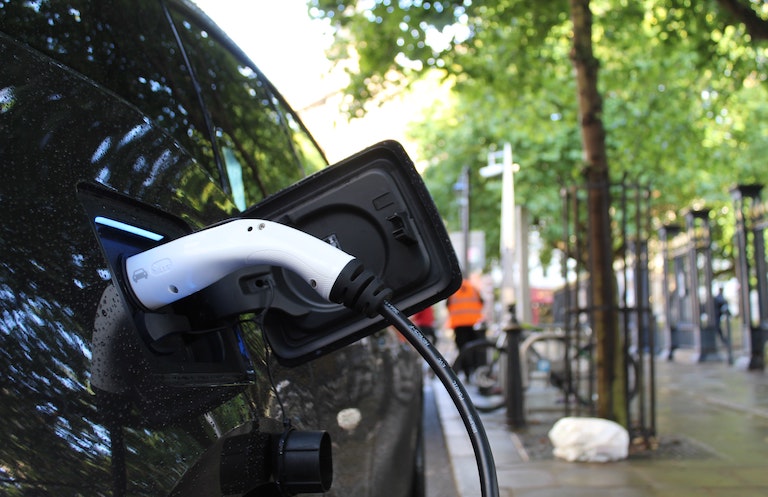
Electric vehicle (EV) infrastructure expanded throughout the Southeast in 2020. In North and South Carolina, Duke Energy Progress and Duke Energy Carolinas were approved to implement electric vehicle pilot programs that include the installation and operation of EV charging stations in public places and multifamily communities as well as publicly accessible fast-charging stations. The Florida legislature passed Senate Bill 7018, which paved the way for the development of a statewide electric vehicle infrastructure master plan. In December 2020, the Florida Department of Transportation submitted its draft of policy recommendations and is expected to complete the master plan by July 1, 2021.
EV manufacturing boomed throughout the region. Mercedes-Benz U.S. International has planned a new EV parts facility near Tuscaloosa, AL. GM announced plans to transition its existing assembly plant in Spring Hill, TN, to its third electric vehicle manufacturing plant in North America. Arrival, the U.K. electric vehicle startup, has chosen Charlotte, NC for its headquarters after announcing plans to build a microfactory in nearby Rock Hill, SC. These developments keep or create over 4,000 jobs in the Southeast and represent a $3 billion investment in local economies.
Energy Efficiency Policy
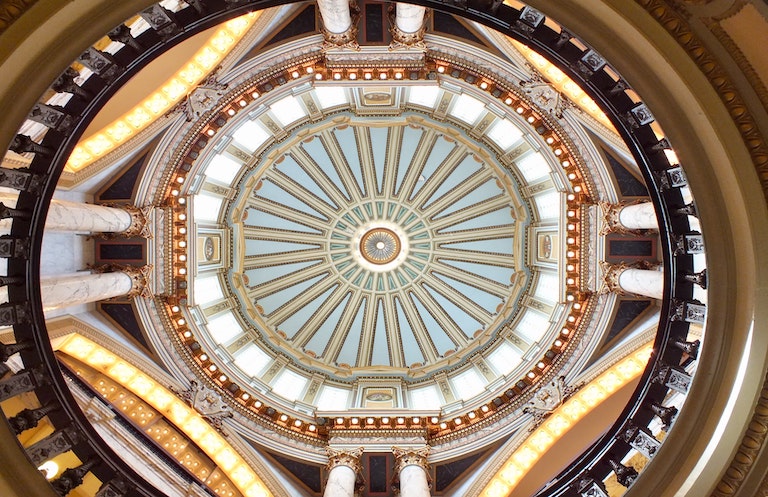
In spring 2020, the Virginia General Assembly passed and approved the Virginia Clean Economy Act (VCEA), requiring state utilities to produce 30% of their energy from renewables by 2030, close all carbon-emitting power plants by 2050, and attain mandatory energy efficiency savings targets. Additionally, the General Assembly made the Virginia Council on Environmental Justice a permanent advisory body to the executive branch, after operating on a temporary basis for nearly two years. The council will provide recommendations to protect vulnerable communities and integrate environmental justice into the state’s daily operations.
In 2019, four of the seven utilities subject to the Florida Energy Efficiency Conservation Act (FEECA) proposed reducing their energy efficiency goals to zero, or nearly zero, for the next decade. The Florida Public Service Commission (FPSC) rejected those goals and began to assess with state legislators how they might reform or reinterpret FEECA to improve energy savings. In early 2020, the FPSC opened docket 20200181 and requested commission staff to propose changes to the processes of setting goals and approving programs for energy efficiency. On January 14, 2021, policy director Cyrus Bhedwar participated in a workshop held by the FPSC on the FEECA revision process. The FPSC is accepting written public comments until February 15.
Both of these acts set the stage for decades of improved energy efficiency goals and clean energy standards, providing a healthier, more just future across the Southeast.
Built Environment
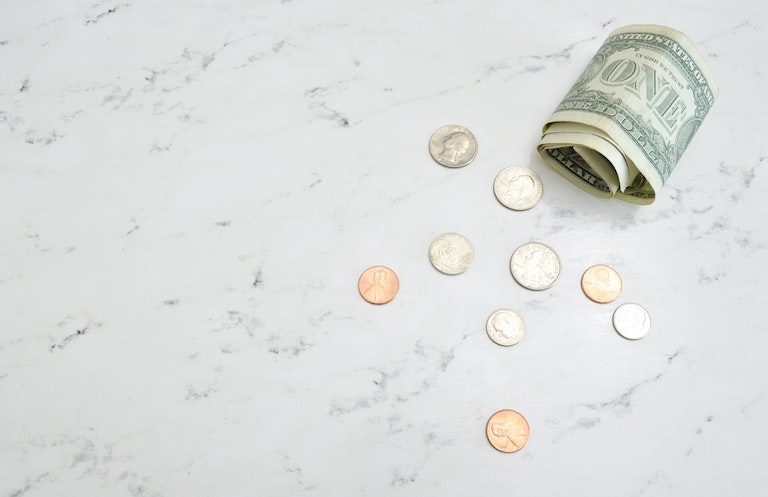
The onset of the economic recession caused by the COVID-19 pandemic revealed and made worse existing inequities in housing and energy for millions of Americans. In September 2020, research from Indiana University confirmed that energy insecurity, the inability to pay utility bills, is higher in households of color than their white counterparts. The American Council for an Energy Efficiency Economy (ACEEE) listed Birmingham, AL as the city with the highest energy burden and Alabama, Kentucky, Mississippi, and Tennessee the most energy burdened states in the country.
Because of this existing economic inequity, Black and Latino communities are most at risk for utility shut-offs. Access to electricity, gas, water, and broadband are all crucial to remaining healthy during a pandemic and sheltering at home.
2020 also affirmed that energy efficiency regulation works. An April FEMA study found that strong building codes, including energy codes, in Florida and California will save the country’s most disaster-prone states $1 billion annually. In its annual progress report, Department of Energy’s Better Buildings Initiative reported nearly $11 billion in savings since its inception a decade ago.
Diversity, Inclusion, & Integration

This summer there was a national calling to confront systemic racism and reform police practices. In the midst of this reckoning, private and public changes moved the region and the energy sector towards equity. In July 2020, Georgia Power’s Senior Vice President of Metro Atlanta & Corporate Relations Bentina Chisolm Terry took on an expanded role that includes Georgia Power’s work in underserved communities – people of color, the elderly, women, and LGBTQ+. In October 2020, Terry, and her colleague Latanza Adjei, Vice President of Corporate Services, were selected to the Atlanta Business League’s list of “Atlanta’s Top 100 Black Women of Influence.”
In August 2020, Department of Energy announced the first slate of Equity in Energy Ambassadors and Champions. The Ambassadors are responsible for leading efforts for ensuring diversity and equal access to energy. In Mississippi, residents overwhelmingly voted in the general election to remove Confederate imagery from the state flag. Similarly, Alabama voters approved an amendment that starts the process of deleting racist language from the state constitution inserted during the Jim Crow era.
While this work is not complete, these steps bend the arc of the universe just a bit more towards justice and equity.
A Tale of Two Tariffs: Ouachita Electric Cooperative and Roanoke Electric Cooperative
SEEA Staff
We spoke with Mark Cayce of Ouachita Electric Cooperative and Marshall Cherry from Roanoke Electric Cooperative on how they have implemented tariffed on-bill programs, HELP PAYS and Upgrade to Save respectively. Both utilities use the Pay As You Save® (PAYS®) system and third-party administrators to support their programs.
Tariffed On-Bill is a model where the investment in the energy performance of homes and buildings is recognized as a system reliability investment and the utility utilizes their established authority to add tariffs for system investments to consumer bills as the collection mechanism.
A tariff is not categorized as a loan to the customer. Therefore, it does not add to the debt profile of the property owner the way a bank loan would. The investment in energy savings is tied to the meter of the physical property and it is transferable with the sale of the property.
A notable benefit of this model is that it can be utilized by renters and is more easily accessible for customers with limited credit or low credit scores.
What was the motivation to start a tariffed on-bill program?
Mark: We initially started looking at this in 2013 because we wanted to see what we could specifically do to help our residential members. Things were getting tough in our region and we have a high percentage of low-income and senior members who couldn’t always pay their bill. We have always given advice on weatherization, and had tried financing programs for upgrades to insulation and duct-sealing, but we couldn’t reach the people that needed to lower their bills because of financial limitations and many of those members lived in rental properties or apartments.
Marshall: Our board learned about the concept about 4 to 5 years ago. Our board of directors has always been interested in finding ways to be more inclusive through energy efficiency financing tools. We serve one of the most economically distressed areas of the state and country. We’re in the first congressional district, one of the poorest districts in the U.S. As a co-op, it’s our mission to serve the community and address these needs.
What has been the business impact of your tariffed on-bill program?
Mark: In 2015, the Energy Efficiency Institute and Clean Energy Works contacted us about tariffed on-bill. I could immediately see the benefits. We could use our cost of capital, which isn’t available to individuals, to create the tariff. It’s not a loan, it’s an investment we’re making in their property. There’s a big difference in that. Alongside Cyrus Bhedwar from SEEA, we worked with the Arkansas Energy Office to secure a $100,000 loan loss reserve. The NC Sustainable Energy Foundation also added a $50,000 loan loss reserve. We haven’t had to collect on any of it, but knowing that we have that backing, made starting the program feel less risky. We wrote a tariff to collect on-bill, sent that to the public service commission in the fall of 2015, and it was approved in 2016 without any changes. After the first year, we had invested in almost $3 million in local member homes.
With weatherization and HVAC, we’re averaging an 18% reduction in demand across all members. Some are as high are as 30-40%. Adding solar moves the savings up to 70-80%. Overall, our cost of power has decreased. For every residential project completed, we’re seeing a 1.5 to 2 MW reduction for peak demand. Because we’ve done 700 projects and added solar, we’ve reduced our summer peak by about 30%. These, and other factors, all contributed to OEC implementing a 4.5% rate decrease on February 1, 2020.
Marshall: It’s made a big impact from a member satisfaction standpoint. We’re reaching more member-owners and making them more comfortable in their homes. We have a found a methodology to address some of the barriers like landlords, individuals not wanting to take on additional debt, or those with credit issues. That has given us a high impact tool to place in our kit that we can use to respond to high bill concerns and helps us do additional outreach. It has also really supported our operating costs. We’re learning that in many cases, our users are high contributors to our peak demand. We are experiencing savings during peak events. It’s showing an internal rate of return. Although we’re selling fewer kwh, we’re experiencing lower demand on the system. The more we can bring the demand down, the more we can flatten our energy sales through any given month and our price point is cheaper and we’re in a better position to sell affordable energy to our member-owners.
What has been the community impact of your tariffed on-bill program?
Mark: We required local contractors, so that we’re investing in our members, but we’re also investing in the community. We’ve spent almost $5 million in investments, and the majority of it, over $2.5 million, has gone directly to local contractors. We also have nonprofits, schools, senior centers, and the county jail participating in the HELP PAYS program. We’re working on the county courthouse right now. Rural schools and rural cities have the same challenges as our residential members with limited access to capital and state budgets that don’t allow for improvements. At the Arkansas Law Enforcement Academy, they were working with a 1960’s boiler system for their heating and cooling in the dorm. We replaced it with mini split heat pumps. We also converted all of their lighting to LED. The state was considering if they wanted to move the training facility somewhere else, and that helped us guarantee that we can keep them here. The academy has about 50 jobs, but also hundreds of cadets come through every year.
Marshall: Overall, we hear great remarks from our member-owners who participate. In many cases we’ve installed new heat pumps; we’ve converted from a propane unit to an electric heat pump. So, there’s good quality of life, comfort, and savings, that they wouldn’t have been able purchase otherwise.
We’re also learning that the local contractors have a kindred spirit when it matches up against the co-op business model. When I hear them say they want to do what’s best for the member, that really lines up with our values. Our contractors go above and beyond to provide quality service. They see the bigger picture and opportunity. We have about $3 million invested in our community. There are contractors who are able to benefit from that investment. They can add employees to help with this work. As their bills decrease, member-owners have more disposable income available to reinvest back into the community. Those two elements support the local economy.
What advice would you give to other utilities exploring tariffed on-bill financing?
Mark: I think they should really look at it. I know their members want it; they know their members need it. They can benefit their members and their own co-ops by bringing that service. By cutting peak demand, we can reduce new plants being built. We’re looking at two coal plants being shut down in the next 7-8 years that don’t have to be replaced. That’s a good thing; that keeps costs down. I think there’s a lot of reluctance and fear with other utilities to jump in the way we have. It’s tough to change. But I’m seeing that a lot of co-ops are considering things now they wouldn’t have four years ago. I think the demand from the consumers is driving that. We’ve gone from an attitude of selling as much electricity as we can to an attitude of serving our customers as best we can. They get lower bills, we get lower costs, everyone wins.
Marshall: Well, I’d say a couple of things. Tariffed on-bill is an opportunity to add another high impact program to your toolkit. We all have high bill complaints. It’s a good response you can provide through data and the losses are very minimal. By applying it as a tariff to the bill, the tariff stays with the location until we’re made whole. It’s a high impact program, and there are companies that are shovel-ready to help get you started. It’s a challenge to manage a tariffed on-bill internally. Along with the intellectual property with the PAYS® model, the work we’re doing with companies like EEtility make the difference. The more companies providing operator services with value systems aligned with the co-op business model will be the pathway forward. We’ve had some great support, even with loan applications to make sure we’re in a good position to receive the line of credit, or legally to make sure we’re in compliance in rolling out a tariff on the bill. A lot of different layers of support have helped us make the program mainstream.
SEEA recently published a tariffed on-bill financing guide for utilities. You can read the report here.
The Fall and Rise of Energy Conservation Codes

Energy conservation codes are making a comeback.
Commercial and residential buildings are energy hogs that consume more than 40% of all energy produced in the United States. Almost a third of this is wasted. Since their inception in the 1970s, energy codes have stemmed these losses and reduced the footprint of America’s building stock. They are one of the few tools available to ensure that the spaces where we spend most of our time are constructed to minimum acceptable standards for comfort, cost, and quality. Although mostly unknown outside of the building industry, these codes matter; a lot.
After two decades with only small gains, in the early 2000s the newest model energy codes—those regularly developed by organizations like the International Code Council (ICC) and ASHRAE as examples for policymakers—began to significantly improve in efficiency with each version. A home built to the 2012 residential code developed by the ICC, for instance, is 32% more efficient than a home built to the standard from just six years earlier. These gains may seem abstract, but they mean that a homeowner will pocket anywhere from $218 to $1,588 each year, saving between $4,763 and $33,105 over the life of a typical mortgage.
In recent years, however, this progress has stalled again. Since the peak in 2012 new model codes have only been marginally more efficient than their predecessors. The 2018 and 2015 versions of the residential energy code developed by the ICC combined are less than 3% more efficient than the 2012 edition. Meeting the 2018 code will only save $20 to $59 each year—ten times less than the savings that accrued in the previous six-year cycle. Although there were still plenty of improvements to be made, by 2018 it looked as if model energy codes might relapse to the stagnation of the 1980s and 1990s, when efficiency gains were few and far between.
This decline was reversed in December 2019 after International Code Council voters supported strong energy efficiency standards for the 2021 code. These voters, who are local government representatives, approved new requirements that include pathways to zero energy, preparations for building electrification, more efficient insulation, home charging infrastructure for electric vehicles, more stringent lighting requirements, and first-of-their-kind standards for water heaters. The new code also provides builders with more flexibility than ever before by allowing them to choose from a series of efficiency configurations to demonstrate compliance. These and other measures will make new buildings more efficient than ever before. Even more significant, they have given new life to a code development process where only minimum improvements in efficiency were becoming the rule.
This is not the end of the story, however. In order to fully realize the new opportunities made available by the 2021 code, state and local policymakers must write these standards into law. This will take the partnership of utilities, manufacturers, retailers, builders, and residents to collectively support cutting-edge energy codes that will reduce the energy footprint of America’s buildings, lower costs, and elevate quality.
Questions? Contact William Bryan, built environment project manager






